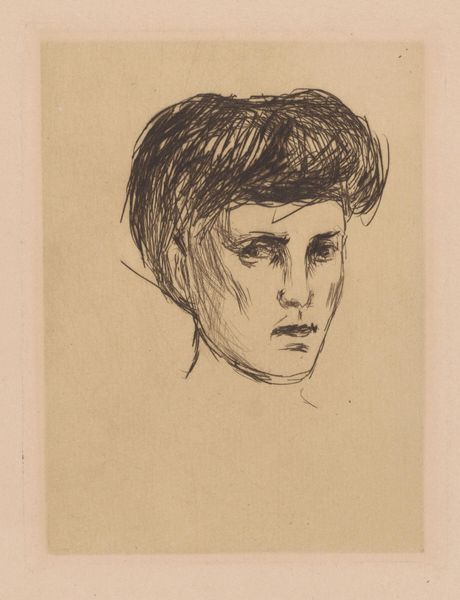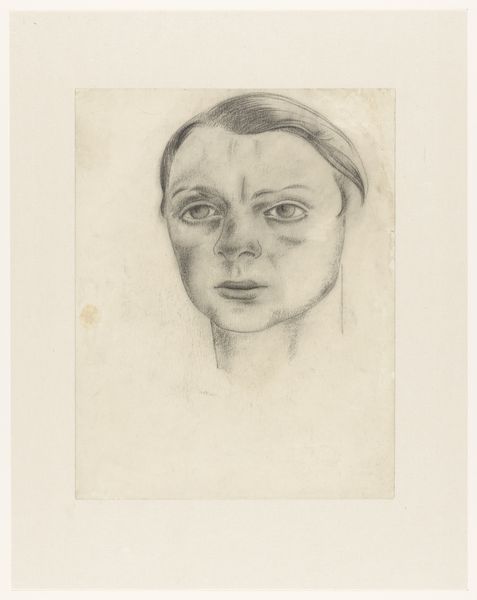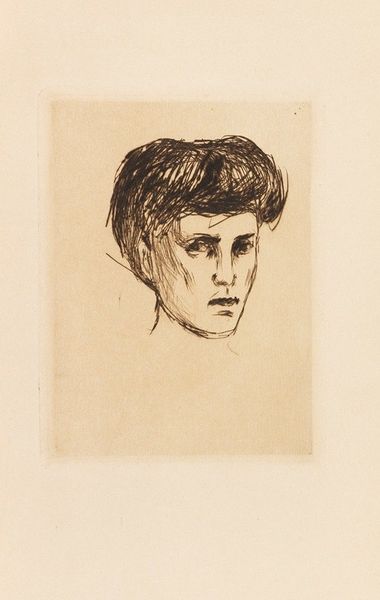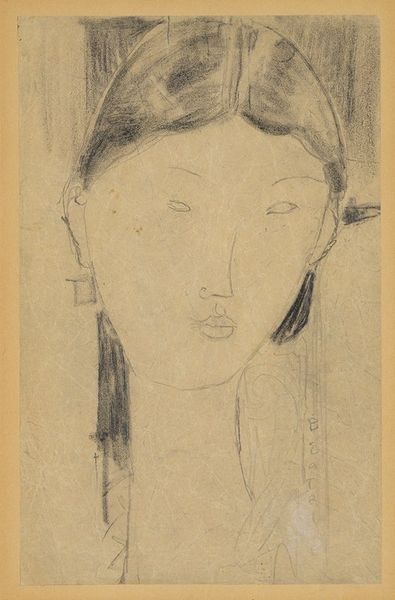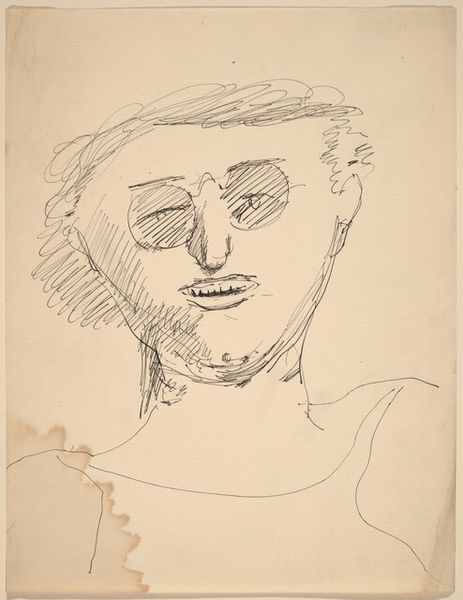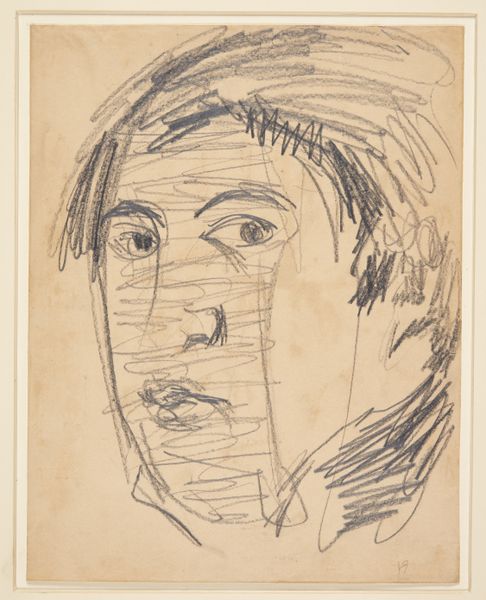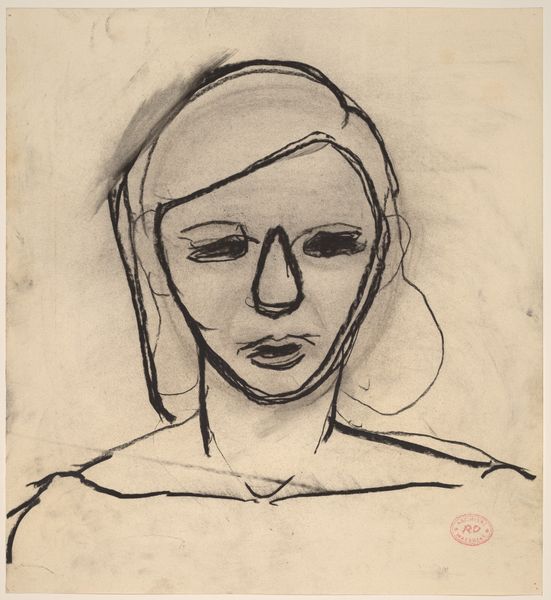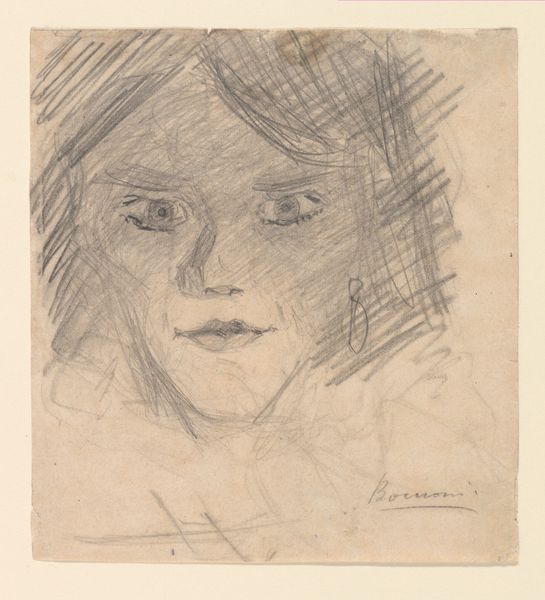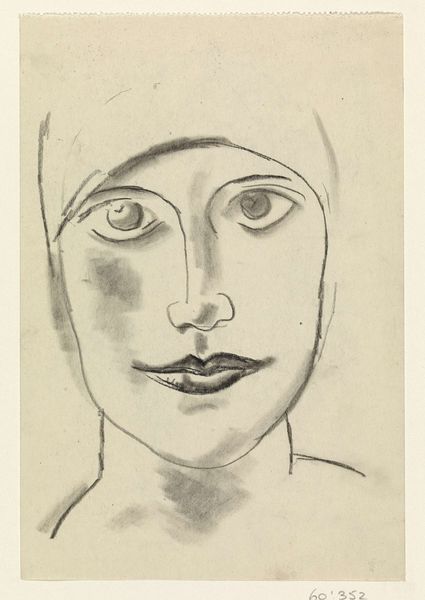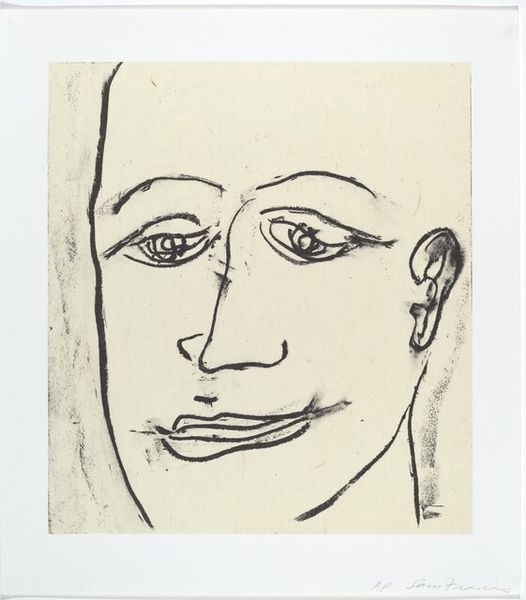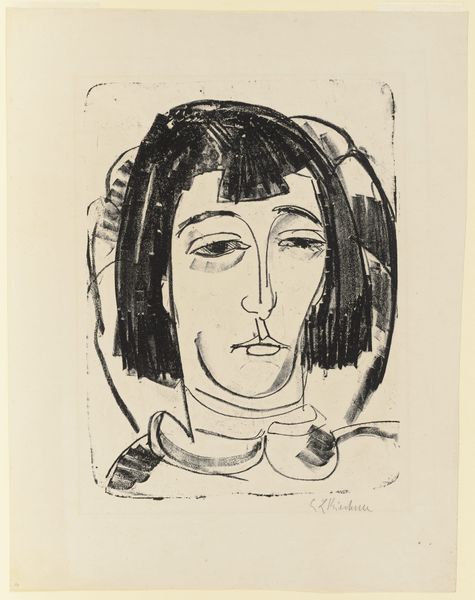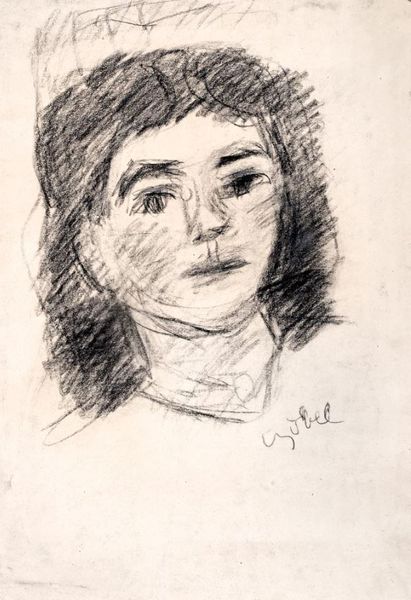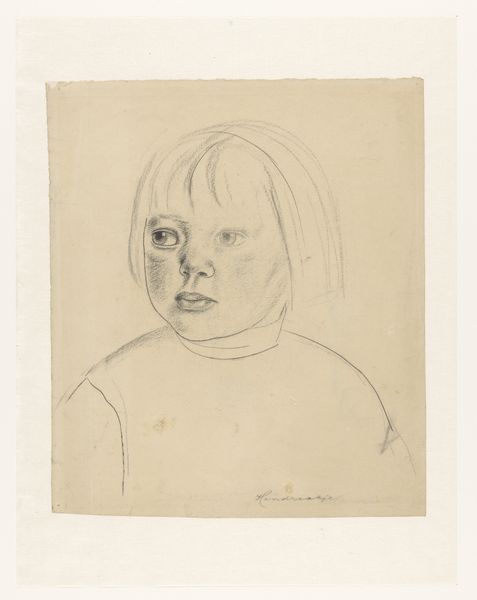
drawing, print, etching
#
portrait
#
drawing
# print
#
etching
#
caricature
#
figuration
#
realism
Dimensions: plate: 14 x 15.6 cm (5 1/2 x 6 1/8 in.) sheet (irregular): 19.5 x 20.5 cm (7 11/16 x 8 1/16 in.)
Copyright: National Gallery of Art: CC0 1.0
Curator: Let’s take a look at Walt Kuhn's "Head with Black Hair," circa 1925. It’s an etching. What's your first take? Editor: Strikingly simple, wouldn't you agree? The bold outline immediately grabs your attention, yet the light, scratchy strokes create a certain vulnerable texture across the face. Curator: Absolutely. Kuhn came into prominence amidst a shift in American art, turning away from European traditions to explore distinctly American themes. Editor: Yes, but note how Kuhn renders form: the economical lines and simplified planes suggest the enduring influence of Cubism, even as he's depicting a representational subject. The planes almost give it a sculptural feel. Curator: Right, this echoes the rise of interest in modern psychology and the fascination with identity, particularly within social circles experimenting with radical political ideas. You saw a wave of artists wanting to strip away the facades, the exterior polish of the Gilded Age, in favor of something rawer. Editor: Precisely! Notice also the size of the eyes in proportion to the face. There's an element of caricature here, but it feels human, doesn’t it? The subject's expression is strangely detached. The sitter's gaze somehow avoids meeting ours head-on, thus maintaining an ambiguous tone. Curator: His works, including this, really speak to the psychological landscape of the interwar years. There was palpable social anxiety and people turned to each other in new ways. You can see it within Greenwich Village circles that were becoming so politically active. Editor: The work is almost monochromatic, but there's richness in the tonal variations achieved by the etching technique itself. Consider how the different pressure applied to the plate yields such compelling nuances of light and shadow. Curator: I agree. Knowing the period during which it was created helps us better appreciate the choices he made in depicting his sitter, his technique serving to emphasize the psychological depths. Editor: A superb, albeit understated, example of modern portraiture. I find myself drawn in by the figure's calm yet observant gaze. Curator: And I'm always amazed by the ways an artwork like this acts as a sign of its times, a material record of societal self-perception.
Comments
No comments
Be the first to comment and join the conversation on the ultimate creative platform.
